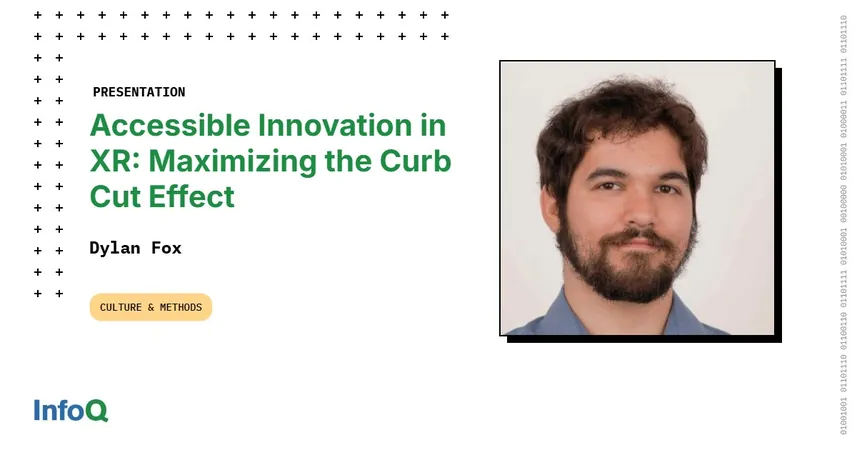
Unlocking a New Era of Accessibility in XR: Embracing the Curb Cut Effect
2025-09-16
Author: Emily
A Transformative Approach to Accessibility in Extended Reality
Welcome to the groundbreaking discussion on accessibility in Extended Reality (XR) led by Dylan Fox, Director of Operations at XR Access, Cornell Tech. Today, we’ll explore how innovative accessibility measures, inspired by the curb cut effect, can revolutionize the XR landscape.
Understanding Accessibility Through the Curb Cut Lens
Accessibility isn’t just about helping those who are disabled; it’s a universal concept that applies to everyone at different stages of life. Dylan defines three key concepts: accessibility, impairment, and disability. Accessibility means creating an environment that everyone can use, regardless of their abilities, while impairment refers to any condition that limits these abilities. Disability arises when there is a mismatch between someone's abilities and the environment around them.
Take the example of curb cuts—ramps installed at street corners for easy wheelchair access. Initially intended for those with permanent disabilities, they unexpectedly benefit everyone, from parents with strollers to delivery personnel with dollies. The curb cut effect exemplifies how designing for people with disabilities enhances usability for all.
The Power of Inclusive Design
Accessibility should not be viewed as a charitable act but rather as an essential aspect of user experience design. As Fox points out, everyone could face temporary impairments at any time—whether due to injury or situational challenges, such as multitasking with a baby in one arm. Therefore, designing for accessibility ultimately enhances the experience for all users.
Maximizing Innovation with Accessibility
Fox draws attention to how many innovations in technology originated from efforts to assist individuals with disabilities. For instance, captions, initially designed for the deaf, are now widely utilized by diverse audiences for various reasons, such as watching content in noisy environments or learning a new language.
Products like audiobooks and speech recognition systems also stem from accessibility needs but have gained massive traction in broader markets. Consequently, investing time and resources in accessibility can lead to creative innovations that benefit everyone.









 Brasil (PT)
Brasil (PT)
 Canada (EN)
Canada (EN)
 Chile (ES)
Chile (ES)
 Česko (CS)
Česko (CS)
 대한민국 (KO)
대한민국 (KO)
 España (ES)
España (ES)
 France (FR)
France (FR)
 Hong Kong (EN)
Hong Kong (EN)
 Italia (IT)
Italia (IT)
 日本 (JA)
日本 (JA)
 Magyarország (HU)
Magyarország (HU)
 Norge (NO)
Norge (NO)
 Polska (PL)
Polska (PL)
 Schweiz (DE)
Schweiz (DE)
 Singapore (EN)
Singapore (EN)
 Sverige (SV)
Sverige (SV)
 Suomi (FI)
Suomi (FI)
 Türkiye (TR)
Türkiye (TR)
 الإمارات العربية المتحدة (AR)
الإمارات العربية المتحدة (AR)